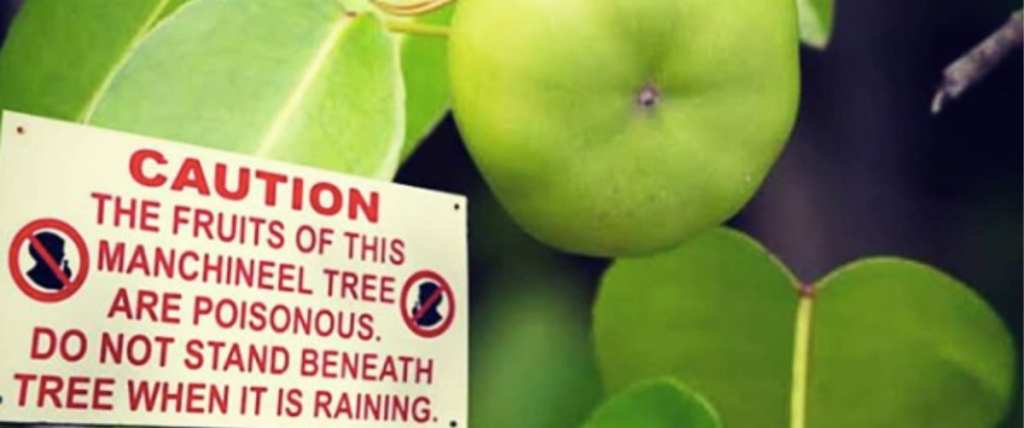The manchineel tree is one of nature’s mysteries that no one is likely to solve anytime soon – every single part of it is toxic to animals (including humans).
Also known as the beach apple, la manzanilla de la muerte (the little apple of death), or sometimes arbol de la muerte (tree of death), the manchineel lives along the coast in brackish waters, occurring in tropical North, Central and South American settings and living in clusters.
https://www.instagram.com/p/Bk9-779DGIO/
The tree itself looks pleasant enough, even beachy, and its small, greenish-yellow fruits have surely been tempting to more than a few hungry, thirsty, unwitting travelers.
You definitely don’t want to eat the fruit, though. Or touch the trunk. Or a branch. Or stand under the tree when it’s raining or touch your eyes or the leaves or really even breathe in while you’re standing too close to it.
You could ask Juan Ponce de Leon why not, had the tree’s poison not (we believe) spelled his demise.
A brief guide to the tree, written by Michael G. Andreu and Melissa H. Friedman, minces no words.
https://www.instagram.com/p/Bt8VqBkhM2T/
“Warning: all parts of manchineel are extremely poisonous. The content in this document is strictly informational. Interaction with and ingestion of any part of this tree may be lethal.”
Reports from people who have been unfortunate enough to eat the fruit claim inflammation and blistering around the mouth and severe stomach and intestinal issues – accounts backed up by the unfortunate Nicola Strickland, who wrote about her taste of the fruit for posterity.
I rashly took a bite from this fruit and found it pleasantly sweet. My friend also partook (at my suggestion). Moments later we noticed a strange peppery feeling in our mouths, which gradually progressed to a burning, tearing sensation and tightness of the throat. The symptoms worsened over a couple of hours until we could barely swallow solid food because of the excruciating pain and the feeling of a huge obstructing pharyngeal lump. Sadly, the pain was exacerbated by most alc*holic beverages, although mildly appeased by pina coladas, but more so by milk alone.
Over the next eight hours our oral symptoms slowly began to subside, but our cervical lymph nodes became very tender and easily palpable. Recounting our experience to the locals elicited frank horror and incredulity, such was the fruit’s poisonous reputation.
While the fruit may not always be deadly, the milky white sap certainly is – it causes burn-like blisters, temporary blindness, and, if it finds its way under the skin and into the bloodstream, death.
https://www.instagram.com/p/B0ryxXtlNwg/
Native peoples were thought to have used the sap to tip their arrows – arrows that killed Ponce de Leon on his second trip to Florida in 1521.
Natives have also used the manchineel and other trees in the spurge family for medicinal purposes (mostly as a laxative, hence the name).
Though the manchineel is the deadliest tree in the lower 48 (it can be found in Florida), it’s not the deadliest plant – that title belongs to the spotted water hemlock.
“A quarter-inch of the stem is enough to kill a person,” confirms botanist and naturalist Roger Hammer. “It’s probably the most violently poisonous plant on the North American continent.”
It is also found in Florida.
https://www.instagram.com/p/Bo1c6XQnJzy/
The moral of this story seems to be that when traveling to wonderful foreign places (or Florida), take as much care with the flora as the snakes and gators – just because plants don’t have teeth doesn’t mean they aren’t going to murder you before you know what happened.






